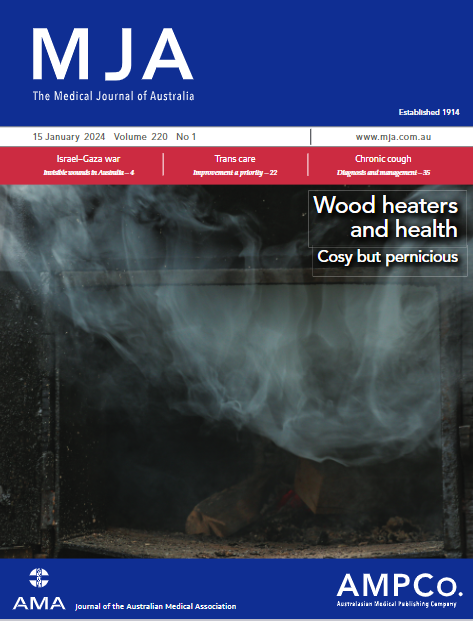The impact of pay-for-performance incentives for stroke unit access on public hospital costs and use, Queensland, 2012–17: interrupted time series analysis
Abstract
Objectives
To assess the impact of pay-for-performance financial incentives for improving stroke unit access in Queensland public hospitals on hospital costs and use.
Study design
Population-based longitudinal study; interrupted time series analysis of linked hospital admissions, emergency department, and hospital costs data.
Setting, participants
First admissions with stroke or myocardial infarction of adult Queensland residents (18 years or older) to public hospitals for more than one day during 1 July 2009 – 31 December 2011 (pre-incentive period), 1 January 2012 – 31 December 2012 (intervention implementation period), and 1 January 2013 – 30 June 2017 (intervention period). Admissions to neurosurgical wards of people with intracerebral haemorrhage were excluded.
Intervention
Queensland Health pay-for-performance program: Quality Improvement Payments (QIP). Initial three years: payments to hospitals contingent on progressively increasing targets for the proportion of people with stroke admitted to acute stroke units. Subsequent years: 10% loading on Diagnosis Related Group-based payments for the care of patients with primary diagnoses of stroke admitted to stroke units.
Main outcome measures
Changes in level and rates of change of outcomes (hospital length of stay, patient-attributed hospital costs, non-elective hospital re-admissions) for admissions of people with stroke or myocardial infarction (as control condition) before and after the introduction of the QIP.
Results
We analysed data for 23 572 people admitted with stroke and 39 511 admitted with myocardial infarction. The median acute length of stay did not change significantly during the implementation year for either patient group; and pre-intervention downward trends declined to near zero for both groups. The difference between the pre-incentive and implementation periods in median total hospital costs per patient with stroke was not statistically significant (–$1692; interquartile range [IQR], –$4440 to $1056), in contrast to the difference for patients with myocardial infarction (–$4278; IQR, –$5280 to –$3275). The proportion of non-elective hospital re-admissions was consistently larger following myocardial infarction than stroke; both proportions increased from the start of the control period to the end of the intervention period (for stroke: from 5.9%; 95% confidence interval [CI], 4.3–7.4% to 11.3%; 95% CI, 10.1–12.5%).
Conclusions
Pay-for-performance quality incentives had no impact on hospital length of stay, costs, or re-admissions. By improving quality of care and survival without increasing hospital use or costs, the QIP was associated with improved value for health care expenditure.


 求助内容:
求助内容: 应助结果提醒方式:
应助结果提醒方式:


